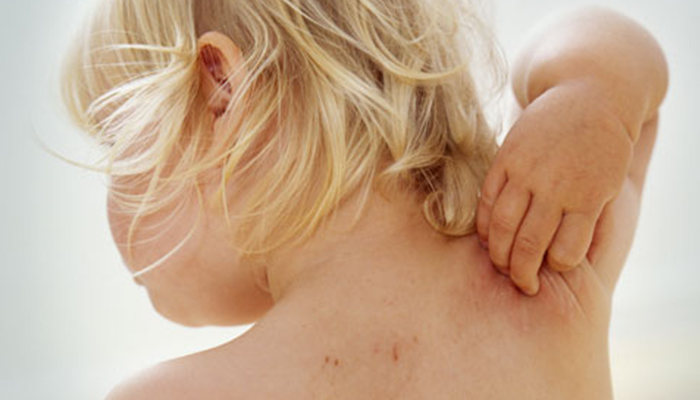What is Eczema (also called Atopic Dermatitis) and why does my child have it?
Eczema is a condition of the skin where the skin becomes dry, red and itchy. The main function of skin is to provide a barrier from the environment and is also the first defense of the immune system. This is important because with eczema, the skin barrier is decreased and becomes easily irritated, sometimes even hyper-excitably with common irritants. There is no single answer to why people get eczema, but several factors can play a role. It is likely a combination of genetic makeup and environmental triggers. There is no magic testing to diagnose eczema, but examination with a provider is usually sufficient for diagnosis. While many children will outgrow eczema, many continue to have sensitive skin into adulthood.
What are the triggers?
Triggers are different for each person. Most common triggers include:
- Heat and sweat or cold weather
- House dust mites or pet fur
- Certain fabrics: wool, nylon, dyed fabrics
- Fragrances in soaps, shampoos, lotions, laundry detergents or fabric softeners
- Saliva or prolonged exposure to water
Nothing frustrates a parent quite like the eczema patches that are difficult to get rid of. Many parents turn to natural lotions and creams as moisturizers only to become frustrated when the rash does not resolve. The following information is based on recommendations by University of Minnesota pediatric dermatologists for daily management of eczema or dry skin.
- Keep baths and showers short, ideally less than 10 minutes
- Use lukewarm water, avoid hot water when possible
- Do NOT use bubble bath
- Limit use of soaps, focus on “dirty areas” – face, armpits, groin and feet
- Do not vigorously scrub the skin when cleaning
- After bathing, PAT your skin lightly with a towel
- ALWAYS apply moisturizer immediately after bathing to lock in moisture. A thick cream is recommended – Cetaphil, CeraVe, Vanicream, Eucerin, Aquaphor are good options.
- Avoid use of powders, perfumes or colognes
- Use unscented hypo-allergenic laundry products, consider double-rinsing your clothing
- Avoid tight or “scratchy” clothing like wool
- Always wash new clothes before wearing for the first time
If eczema patches continue despite these recommendations, you should see your provider to discuss adding a topical steroid cream such as hydrocortisone 1% or a prescribed cream to be used twice daily on the skin just before moisturizing. Always monitor for areas that have redness or yellow crusting as this may be signs of bacterial infection and your child should be seen right away.

Leave a Reply